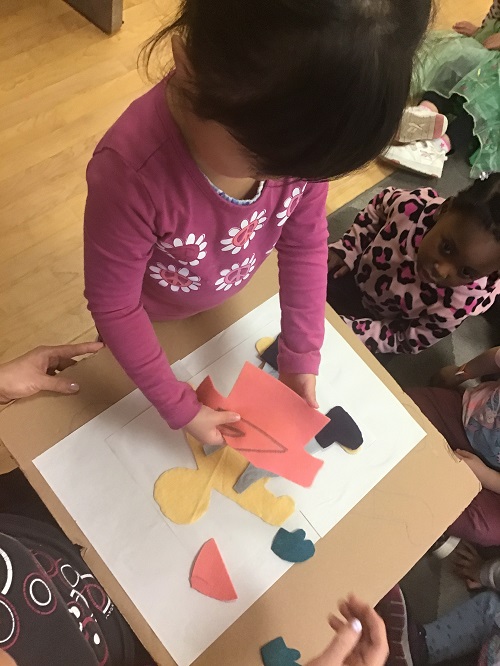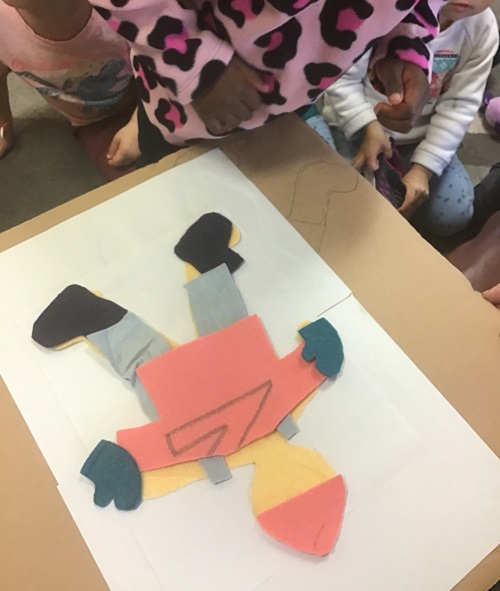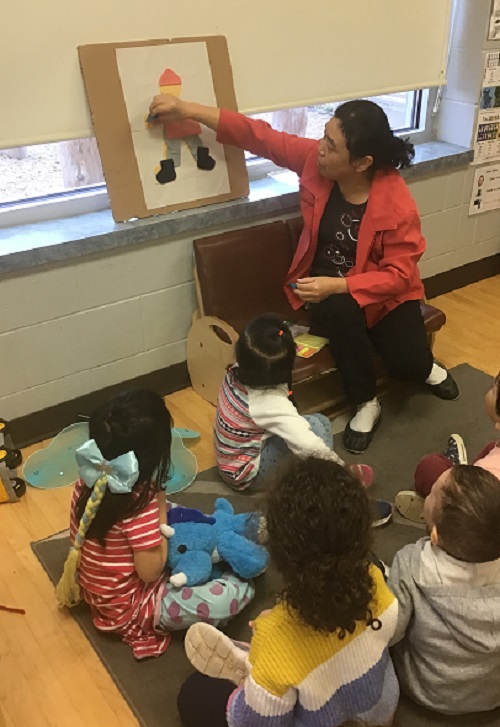The weather is getting colder and colder, and children are faced with the challenge of wearing weather appropriate clothes every day when they go out. During outdoor dressing time. Graeme put his gloves on first, Nora put her boots on first, Isaac put his hat on first, children were getting dressed in their own way and while we celebrate their independence, we saw their confusion when they struggled to put on the next article of clothing. After observing this situation Educator Sue wondered how we could support the children in a positive way. We did the following activities based on how well the children were getting dressed. Educator Sue provided a human body structure out of felt, and also cut out hats, gloves, coat, snow pants, and snow boots. Then the children had the opportunity to dress the person one by one in order while singing a song that Sue taught them to support them in dressing the felt person.
"Snow pants first, Snow pants first.
Then snow boots, Then snow boots.
Next put your coat on. Next, put your coat on.
Hat and mittens. Hat and mittens."
(Song sung to the tune of “Frere Jacques”).
We asked the children to practice this sequence over and over again, and the children took turns to participate. Through repeated practice, the children initially mastered the order of dressing, and then the educators continued to repeat this order when dressing in the hall-way. Now, most children have basically mastered the order of dressing up.
There are many benefits to preschoolers learning to dress themselves such as:
***Self-care skills: This helps develop children’s self-care skills.
***Independence: Getting dressed is a basic skill in daily life. After learning it, children can handle daily affairs more independently.
***Improves cognitive skills: Dressing requires children to develop some cognitive skills such as sequencing, spatial perception and observation.
***Hand-eye coordination: Activities such as buttoning, zippering, and shoelaces help develop children's hand-eye coordination.
***Boosts self-confidence: Successfully putting on clothes will boost children's self-confidence and make them feel like they can complete the task.
***Enhance hands-on ability: This helps develop children's fine motor skills
The next step may be to provide similar activities to continue practicing this skill as repetition is key in children’s learning. We as educators can encourage the children who dress faster to assist their peers who may still need help. This will also increase their sense of pride and belonging.












